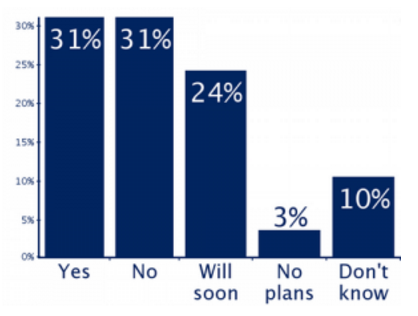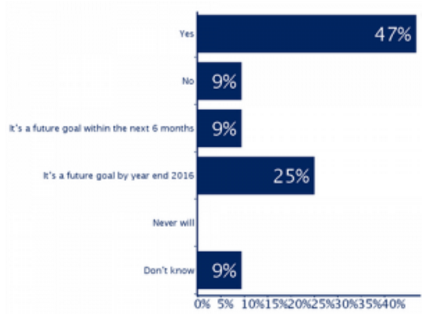Integrating Your IT Asset Management and IT Service Management Programs
When IT is designed to operate in domains, gaining visibility across the infrastructure is virtually impossible. There are separate teams, tools, and objectives that limit information and data sharing across the network, database, server, data center, client and other domains. However, when visibility into all of the infrastructure components that comprise business services cross those domains, the benefits to the organization are huge, especially in the area of change-impact analysis.
For example, an online patient billing system is a business service found in healthcare. That service runs on servers that are potentially virtualized, with software that includes databases, off the shelf and custom developed applications, middleware, storage, networking hardware, load balancers, and a disaster-recovery image. If any piece of that business service does not work as expected, it could cost the organization public trust through negative publicity, loss of revenue and possibly be investigated by regulators. In any given week, there are numerous news stories across industries about outages, some caused by hacking attempts, others by internal unsynchronized IT efforts. As organizations become more complex, using hybrid cloud services, cloud management platforms, infrastructure and platform-as-a-service, outsourcers and contract developers, the need to ensure the stability of business services becomes paramount.
Let’s look at the drivers that could lead an organization to want to adopt an integrated approach to IT asset management (ITAM) and IT service and support management (ITSSM).
- Lack of visibility into assets, no centralized view
- Effective Data Center change impact analysis
- Enabling agility within value streams
- Need for business service view
- Faster incident identification and problem resolution
- Relationships of assets to each other and services not clearly understood
- Enable faster product and services roll out
- Data Center consolidation
- Following ITIL roadmap
The nine problems listed above are all relatable in IT today. Yet, when they are boiled down, the primary challenge is visibility. With different discovery sources used by each domain collecting data about configuration items (CIs), there is a need to create a centralized view of how assets are interconnected. Yes, you can integrate into those different discovery tools, but without a centralized database (CMDB) it becomes impossible to view the data and know with certainty that it contains trusted data.
Today, CMDBs reside in IT service management tools because they are the holding area for all of the cleansed, normalized and reconciled CIs within an organization. ITAM and SAM tools share data with the CMDB and ITSM tools because the same discovered data is shared for multiple purposes. ITAM is focused on managing and tracking all corporate IT assets, while ITSM is focused on ensuring that the business does not experience outages related to those assets. With an integrated strategy, risk is reduced because services, and the assets that make up those services, are not experiencing unplanned downtime. If a change is being pushed out, risk-impact analysis will reveal if that change will have a negative impact. When the tools can bring together service catalog, usage analytics, financial management, provisioning, policy governance, compliance, cost analytics, service modeling and integrated processes, it escalates service management to service optimization.
During a LANDESK webinar on January 6th, it was echoed further when we asked the audience the following two polling questions.
Does your organization have an integrated ITAM and ITSM solution in place?

Source: LANDESK January 2016
Does your organization recognize the value of having an integrated ITAM and ITSM?

Source: LANDESK January 2016
It is clear that webinar participants recognize that there is value in adopting a unified approach to both ITAM and ITSM. In a November 2015 Gartner RN entitled “Three Use Cases to Select the Right SAM Tool” this point was echoed again that ITAM and ITSM create synergies. The value proposition is akin to the benefits a shark gets from its constant companion, the remora fish.
If any of the top nine problems or webinar polling data resonate with your organization, then this is journey that requires serious consideration. To convince senior management that the sum of ITAM and ITSM creates a compelling whole, build the business case by demonstrating how this would help your CIO achieve their targeted goals for 2016 and beyond. The next time there is a business critical outage, and it will inevitably happen, demonstrate that the improved visibility across the complex environment potentially could have prevented the outage.